What do Communities on Steemit Look Like? (Part 1)
The Steem network is an open source social media network built on a Blockchain. Like all Social Media Communities play a pivotal role.
The community features enabled by Hivemind and HF20 promise to facilitate enhanced content discovery, curation and growth. In this series of posts I will take a closer look at what communities already exist on Steem/it and how they have organically formed to date.
We can examine communities in different ways. Tags or topics have been looked at by other analysts. In this series I will examine snapshots of Network activity.
Communities based on Voting Activity...
In this post I will examine votes over the past week to see what voting patterns tell us about communities to answer the question:
Is Voting Activity a Good Indicator of Community?
Repository
https://github.com/steemit/steem
Outline
- Introduction to Network Graphs of Steem Activity
- Network Level Communities
- Features of the Largest Community
- Features of the Largest Payouts
- Is Voting Activity a Good Indicator of Community?
Network Graphs of Steem Activity
- Each node in the following graphs is a Steemit Account that has either voted or posted in the past week.
There were 93k nodes analysed - The size of the node (and text) represents the Payouts received for posts in the past week.
- The connections represent the number of votes in the week.
There are 489k connections for the 93k nodes. Some Accounts have multiple votes from a single node in the week.
I have used unsupervised machine learning to identify "communities" based on the voting activity. There are 21 significant groups emerging each represented with a different colour in the first graphs.
Network Level Communities
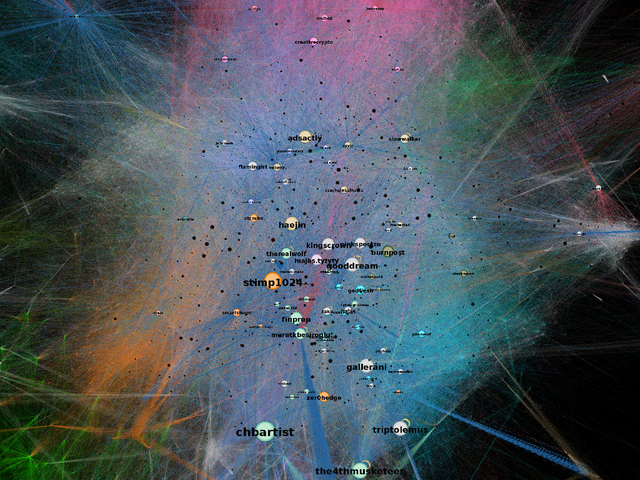
- I find it interesting that the biggest payouts in the past week all center in this graph. This indicates to me that we do not have self sufficient voting communities yet.
We will now take a look at the largest Community in more detail. Interestingly there are no account payouts greater than 500 Dollars in this group.
Features of the Largest Community
The colour in the next graph indicates the Steem Power (SP) of the nodes.
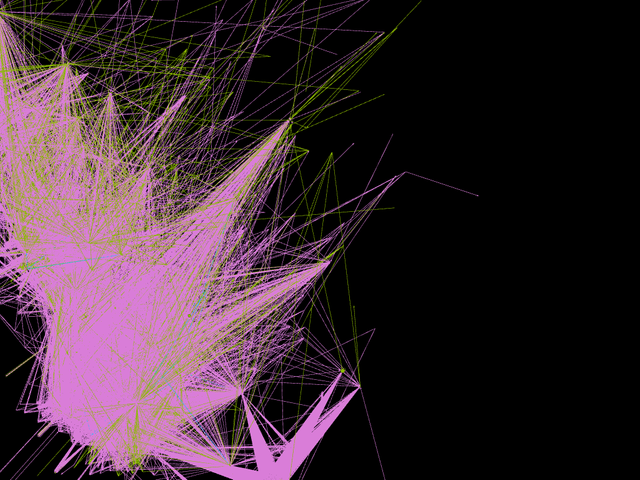
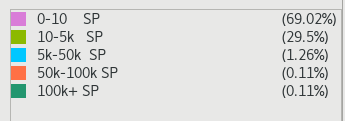
- This group is dominated by accounts less than 10 SP.
The colour in the next graph indicates the duration since account creation of the nodes.
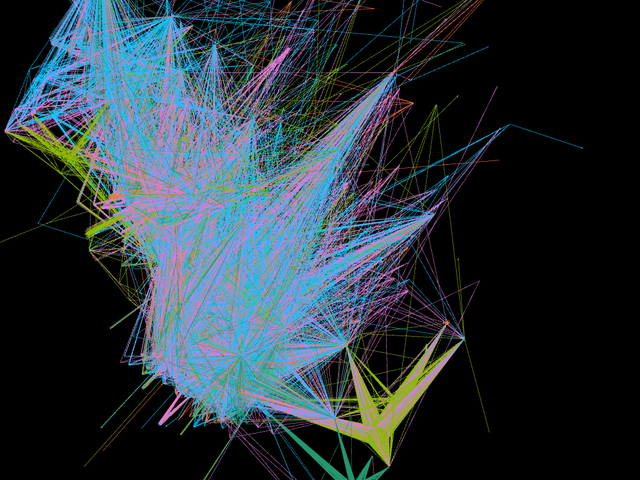

- This group is dominated by newer accounts less than 9 months in duration.
Features of the Largest Payouts
We often here from people on Steemit that you need to work hard to get noticed. Working hard may mean delivering high value content but it may also mean being active and supportive in Communities.
The following graph paints a very interesting picture.
Each node selected here has a payout in the week of over 500 Dollars.
- Votes for the author are coloured in blue, i.e. incoming votes.
- Votes by the author are coloured in red, i.e. outgoing votes.
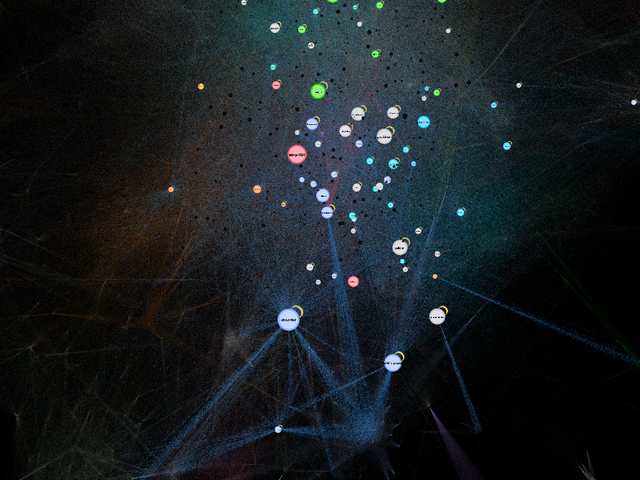
- I cannot see any red for the selected accounts. These accounts don't appear to vote much for other accounts. That aspect of community is clearly absent from these top posters.
Conclusion
Is Voting Activity a Good Indicator of Community?
- Voting activity does not satellite into communities on the Steem Network which I would expect if it was a good indicator of communities.
- Payouts are centered in the Network rather than in individual communities so likely the driver is central features of the network such as the trending page rather than community activity.
Based on these observations and from digging more into these network graphs over the weekend I am not convinced that voting is a good measure of Communities. In my next post on this topic I will take a look at the same graph but based on Comments instead of Votes and Payouts.

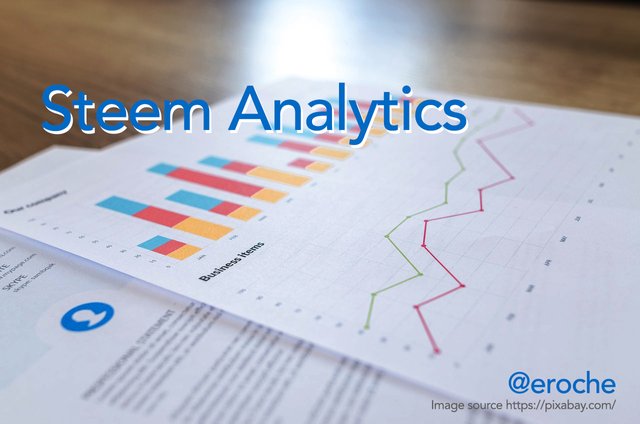
Thank you for reading this. I write on Steemit about Blockchain, Cryptocurrency and Travel.
Hi @eroche, great to see you contributing to Utopian as well! :)
Interesting approach to find communities based on voting activity! What were the criteria for the ML part to detect a community? Did it include only the number of votes, or also their value?
In the Utopian open source context it would have been great to have the results in a way that they can be reproduced. Could you give more details on the exact query, the machine learning part, and how the fancy graphs were created?
Unfortunately, only a few account names can be read in the graphs.
One name in the graph is chbartist, with frequent posts boosted into the hundreds of $ while having 5k own account SP. In this case it is not very surprising that the graph doesn't show many outgoing votes.
So I absolutely agree with your conclusion, that the voting activity as shown here is probably not the best measure to find communities. Looking forward to your next post!
Your contribution has been evaluated according to Utopian policies and guidelines, as well as a predefined set of questions pertaining to the category.
To view those questions and the relevant answers related to your post, click here.
Need help? Write a ticket on https://support.utopian.io/.
Chat with us on Discord.
[utopian-moderator]
Thanks @crokkon,
In this, my first attempt at this refining an algorithm to detect Steem communities based on network graphs, I have not looked at vote value directly but performed a clustering algorithm to detect modularity based on the density of connections between nodes. In this case based on Vote Count.
I was very interested to see if small groups were forming and if one or a small number of people was being rewarded for being part of community. That does not appear to be the case.
It would be interesting to extend this analysis to cluster based on a modularity calculated for Vote Amounts, do big accounts form communities that vote for each other?
In my next contribution where I will focus on comments, I will go into more detail about the tools and methodology used for this analysis.
Thank you for your review, @crokkon!
So far this week you've reviewed 1 contributions. Keep up the good work!
Thanks for sharing interesting information about Steemit. I think that means %1.4 of Steemians invested Steemit. I think very few people have invested in Steemit.
Hey @eroche
Thanks for contributing on Utopian.
We’re already looking forward to your next contribution!
Want to chat? Join us on Discord https://discord.gg/h52nFrV.
Vote for Utopian Witness!
This is really interesting. I know of one whale that constantly upvotes himself but there are a few more and none of them vote for anyone else.
It will interesting if communities develop on steemit. There were initiatives started recently post which i knew of telegram groups that were efforts to build communities on steemit but don't think it worked.
I also think comments may show the same thing. Lots of red fish trying to get upvotes from whales by commenting, and upvoting them for curation rewards
There will sure be lots of comments from Redfish looking for an upvotes. The network analysis however will emphasise interactions so we may see more communities forming in that picture.
Looking forward to your next post then :)
One thing i would be interested in seeing in your comment analysis would be 'true interaction' where there is at least a reply (preferably more than one) to the comment (by the original author, or someone else) indicating there was an actual conversation.